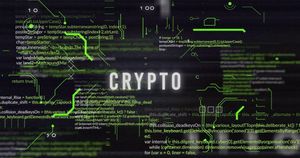U.S. Financial Services Industry Study Demonstrates Feasibility of a Regulated Digital Asset Settlement Platform Supported by Shared Ledger Technology
The Regulated Liability Network U.S. Proof of Concept demonstrates the potential to upgrade international payments using deposit tokens settled in wholesale central bank digital currency
Members of the U.S. financial services sector today published the findings of a proof of concept (PoC) that explored the feasibility of the regulated liability network (RLN), which is envisioned as an interoperable network for wholesale payments operating on a shared multi-entity distributed ledger.
While today’s traditional payment systems function effectively, there is still friction in transactions as it relates to speed, cost, off-hours availability, and the settlement process. The RLN PoC explored the potential of shared ledger technology to address these frictions in support of safe and efficient payments.
The study was spearheaded by a collaborative working group leading three workstreams that analyzed the business applicability, technical feasibility, and legal viability of using shared ledger technology to settle the liabilities of regulated financial institutions through the transfer of central bank money. The experiment was conducted in a test environment and used only simulated data. All payments were denominated in U.S. dollars (USD).
The PoC focused on the following:
- Domestic Interbank Payments: This use case simulated wholesale USD payments between commercial banks and was intended to prove the core functionality of the proposed payment system. Transactions were conducted in commercial bank deposit tokens and settled using a theoretical wholesale central bank digital currency (wCBDC), a tokenized record of a central bank deposit liability.
- Cross-Border Payments in USD: This use case focused on USD wholesale payments outside of the U.S. and explored the potential of the concept to enhance the experience of global users of USD as an international trade and settlement currency.
The PoC successfully simulated both scenarios, identifying shared ledger technology as a potential solution to support payment innovation.
PoC Key Findings
Business Conclusions
The global economy relies on the USD as the international currency of choice for remittances, trade, and financial settlements. A shared multi-entity distributed ledger could deliver improvements in the processing of domestic and cross-border payments. The benefits arise from the orchestration of commercial bank and central bank tokens operating on a common ledger within a sound legal framework.
The business workstream concluded that a global, near-real time, 24/7, dollar payment system could be delivered through the RLN concept. This would enhance the processing of cross-border payments denominated in USD. The working group recommended the exploration of the design space including alternative models and technologies that were out of scope of the PoC but could offer similar improvements for wholesale payments and settlements.
Technical Conclusions
The technical workstream validated that the proposed architecture was able to deliver the benefits of settlement finality, a common source of truth, standard transaction data, and privacy for all participants on the network. The system demonstrated programmability through smart contracts that could enable efficient liquidity management. Including a theoretical wCBDC and commercial bank deposit tokens on the same platform enabled a shared ledger to settle payment transactions simultaneously and in near real-time.
Legal Conclusions
The legal workstream considered the application of certain U.S. rules and regulations to the RLN system as contemplated in the PoC. It found that the use of shared ledger technology, including tokens, to record and update the ownership of central bank and commercial bank deposits should not alter the legal treatment of such deposits. Although further analysis, research, and engagement with regulators would be required before final conclusions can be reached, the legal workstream did not identify any insuperable legal impediments under existing U.S. legal frameworks that would prevent the establishment of an RLN system as contemplated in the PoC.
To read the full business, technical, and legal reports, see here.
Further Research
This study contributes to the collective body of knowledge on the application of distributed ledger technology to the regulated financial system. The working group has not committed to future phases of work connected to this PoC. The findings highlight areas for further research and analysis of potential enhancements to critical payment infrastructures including understanding potential operational, compliance, and liquidity risks. The working group agreed that public-private collaboration is a constructive method to explore financial innovations that meet the needs of the rapidly digitizing, always-on, global economy.
Disclaimer
This proof-of-concept is not intended to advance any specific policy outcomes, nor is it intended to signal that the Federal Reserve will make any imminent decisions about the appropriateness of issuing a central bank digital currency, or any other product or service, nor indicate how one would necessarily be designed.
*The participants on this project include: BNY Mellon, Citi, HSBC, Mastercard, The New York Innovation Center at the Federal Reserve Bank of New York (NYIC), PNC Bank, Swift, TD Bank, Truist, U.S. Bank and Wells Fargo. The technology was provided by Digital Asset and SETL, hosted by Amazon Web Services. Legal services were provided by Sullivan & Cromwell LLP, and Deloitte provided advisory services.
For more information, contact one of the following media relations representatives at the participant firms.
View source version on businesswire.com: https://www.businesswire.com/news/home/20230706750899/en/
Contacts
- BNY Mellon – Ryan Wells, (646) 648-3887, ryanw@bnymellon.com
- Citi – Nina Das, (212) 816-9267, nina.das@citi.com
- HSBC – Matt Kozar, (212) 525-1007, matt.kozar@us.hsbc.com
- Mastercard – Biz Cozine, (914) 414-1876, Biz.Cozine@mastercard.com
- New York Innovation Center at the Federal Reserve Bank of New York – Shelley Pitterson, (917) 698-0510, shelley.pitterson@ny.frb.org
- PNC Bank – Whitney Wilson (214) 871-1259, whitney.wilson@pnc.com
- Swift – Rachel Lindsay, (32) 478-945-795, rachel.lindsay@swift.com
- TD Bank – Catherine Achey, (443) 682-2309, catherine.achey@td.com
- Truist – Brian Boudreaux, (404) 813-0881, brian.boudreaux@truist.com
- U.S. Bank – David McCoy, (612) 303-2309, david.mccoy1@usbank.com
- Wells Fargo – Patrick Abberton, (929) 401-8039, patrick.abberton@wellsfargo.com
More News
View More




Recent Quotes
View More
Quotes delayed at least 20 minutes.
By accessing this page, you agree to the Privacy Policy and Terms Of Service.